A Collector’s Guide to Laurent Ferrier
Through a career that began at Patek, later culminating in the founding of his eponymous brand in 2010, Ferrier has consistently emphasized a return to classical watchmaking values. He creates pieces that celebrate both simplicity and technical sophistication. Though Ferrier hasn’t always captured the mainstream spotlight, his dedication to preserving the art of fine watchmaking has made his brand a quiet mainstay in independent watchmaking. He is a discreet master, for those who appreciate the subtleties of watchmaking without bombast.
As Mark Kauzlarich aptly questioned in a recent Hodinkee article, “Is Laurent Ferrier back, or was it just here all along and we needed a reminder?” Well, for some, it never left—they’ve simply been waiting to be rediscovered by those with an appreciation for uncomplicated, timeless craftsmanship.
In this guide, we’ll journey through the life of Laurent Ferrier, both the person and the company — exploring his humble beginnings, his rather interesting career, his love for both watches and race cars, and how he ultimately built one of the most respected independent watch brands in the world. While we aim to provide a comprehensive overview of his work, it is important to note that this is not an exhaustive or complete guide.
Last updated 7 February 2025
Early Years (1946-1948)
Ferrier was born in Geneva in 1946 into a family deeply entrenched in watchmaking. His grandparents and parents were all watchmakers, with his father being a master watchmaker specializing in grand complications. In a Revolution interview, Ferrier once explained, “My father would tell me stories of how timekeeping was interlinked with the story of human history. That the marine chronometer was the instrument which allowed man to safely navigate the seas.” It was this intergenerational connection to horology that sparked Ferrier’s lifelong passion.
Growing up in the Jura Mountains during the 1950s and 60s, Ferrier’s path seemed predetermined. Descendants of watchmakers often followed in their forefathers' footsteps, and Ferrier was no exception. His father ran a restoration workshop across from Vacheron Constantin; it was expected that young Laurent would continue in the family trade.
By the age of 16, Ferrier began formal watchmaking education and his extraordinary talent quickly emerged. He graduated at the top of his class from the watchmaking school of Geneva and presented his Montre d’École (School Watch) in 1968 (his first-ever creation). The Montre d’École would later become a representation of Ferrier's deep commitment to purity in watchmaking design, focusing on elegance, simplicity, and technical excellence.

François Servanin (far left), François Trisconi (centre), Laurent Ferrier (far right) at Le Mans 1979. Image: Laurent Ferrier
However, motorsport was his first love in youth. “I loved motor racing magazines,” Ferrier recalls, though his resources were limited to just a French equivalent of Motor Sport. His childhood heroes were Jim Clark and Jo Siffert, while his dreams involved racing in Formula One or the 24 Hours of Le Mans. For most, such dreams remain distant. In Ferrier's case, they were delayed but achieved all the same.
By the late 1970s, Ferrier found himself racing alongside some of the biggest names in motorsport, such as Jochen Mass and Loris Kessel. His growing reputation as a gentleman racer made him an interesting figure, particularly back in the Vallée de Joux where his day job as a watchmaker at Patek Philippe seemed worlds apart from the adrenaline-fueled tracks of Le Mans.
Patek Years (1968-2008)
After completing his studies, Ferrier joined the Swiss watchmaking institution Patek Philippe in 1968 and went on to have a 37-year career at one of the most respected watch brands in the world as a Technical and Product Director. His early years included involvement with the prototype department in a significant project to develop a highly precise quartz watch for Boeing airplanes during a period when Patek was heavily focused on quartz technology.
The aerospace company sought to develop a chronograph for the dashboard of a new aircraft after reaching out to several watch manufacturers for collaboration. Ferrier's team, consisting of a watchmaker, a constructor, and a mechanical engineer, spent two years creating a digitally indicated chronograph, a forward-thinking design at the time. Despite the rigorous specifications, including temperature tolerance, their proposal was ultimately not selected as Boeing opted for a more traditional hands-on display, perhaps reflecting the pilots’ familiarity with classic instruments.
The 1970s also saw the Swiss watchmaking industry rocked by the Quartz Crisis, where inexpensive and highly accurate quartz watches from Japan flooded the market. Ferrier, however, remained a staunch believer in mechanical watches through this time, asserting that electronic devices, no matter how innovative, would eventually become obsolete whereas a well-crafted mechanical watch could continue functioning (with simple maintenance) for decades.
After the Boeing project, Ferrier built a solid relationship with his superior, leading him to work across various technical departments at Patek Philippe throughout 1971. He briefly left the company, only to be invited back to focus on external parts, such as cases, crowns, and lugs — elements exposed to the outside environment.
After a brief hiatus to focus on racing, he returned to work in the Product Development Department in 1974. At that time, Patek Philippe lacked dedicated watch designers, relying instead on teams to handle movement design and sketches separately. Recognizing the need for better coordination in launching new products as the collection expanded, Henri Stern assigned Ferrier the task of establishing a cohesive product development process.
Developing the Nautilus (and Aquanaut?)
One of Ferrier's most memorable contributions at Patek Philippe was his involvement in the creation of the now ubiquitous Nautilus in 1976. Designed by Gérald Genta, the Nautilus would become one of the most famous and coveted steel luxury watches in the world. Ferrier's role was to take the two-dimensional drawings provided by Genta and transform them into a tangible timepiece. He was tasked with fine-tuning the external components — case, dial, hands, and bracelet — to ensure they worked synchronously with the overall aesthetic of the watch.
 Patek Philippe Aquanaut ref. 5066A ‘Japan Blue’. Part of Hairspring Exclusives
Patek Philippe Aquanaut ref. 5066A ‘Japan Blue’. Part of Hairspring Exclusives
While Ferrier's involvement with the Nautilus is well-documented, his potential role in another iconic design, the Aquanaut, is less openly discussed. Out of respect for Patek Philippe's proprietary designs, Ferrier's team refrains from making direct statements, emphasizing that the Aquanaut’s design is entirely the property of Patek Philippe. Nonetheless, it is widely understood that Ferrier played a significant role in leading the team responsible for its design and was instrumental in bringing this modern classic to life.
As Ferrier explains of this time, “What is funny is that because this was far before the era of three-dimensional digital modeling, the front of the watch was always drawn perfectly, as was the back of the watch, but the side was often left as something for us to interpret.” This hands-on, detailed approach to crafting luxury watches would shape Ferrier's own philosophy when he eventually founded his own brand later on. Ferrier left Patek in 2008 at age 62.
Motorsports and Racing at Le Mans (1971-1979)
While watchmaking was always central to Ferrier’s life, another passion ran parallel to it: motorsport. Starting in the early 1970s, Ferrier found himself drawn to the high-octane world of endurance racing, competing in local races before moving on to more prestigious events.
According to Ferrier, “I loved the idea of trying to achieve perfection and consistency with each lap. I suppose this is also one of the things that drew me to horology; the idea of trying to express something perfectly.” Racing appealed to him because it shared many of the same qualities as watchmaking—precision, focus, and an obsessive attention to detail.
Ferrier’s introduction to racing came not through go-karts or formal circuits but through sheer improvisation. “In Switzerland, we had no racetracks, but when I was 18, I had a Fiat 500, and on the snow, I handled it pretty well. That was where I first found the real pleasure of driving.”
 Ferrier, Servanin, and Trisconi’s Porsche 935 at Le Mans. Image: Laurent Ferrier
Ferrier, Servanin, and Trisconi’s Porsche 935 at Le Mans. Image: Laurent Ferrier
As he grew older, Ferrier’s passion for motorsport led him to rally-prepped cars, local races, and eventually endurance racing. He and a group of friends bought a Lotus 18, which they raced on a small circuit near Geneva. While it may have been a humble beginning, it ignited Ferrier's competitive spirit. Soon, he was competing internationally in endurance championships at iconic tracks like Monza and Spa. His vehicles evolved, too, from a Lotus to a Chevron Sport B21 and eventually a Porsche 908.
Ferrier’s racing career reached its peak in the late 1970s when he began participating in the Le Mans 24 Hours with François Servanin and François Trisconi, one of the most famous endurance races in the world. Between 1974 and 1980, he competed in Le Mans seven times, each race refining his understanding of discipline, teamwork, and the importance of precision in performance. In 1977, Ferrier achieved a remarkable victory, taking first place in the 2-liter prototype category — a win that cemented his place in competitive racing.
It was during these races that Ferrier met his future business partner, Servanin, an industrialist and fellow racing driver. The two bonded over their shared love for mechanics and speed, which later became the foundation of a lasting friendship and business partnership. Their most notable achievement together came in 1979 when they raced a Porsche 935T at Le Mans and finished third overall, an impressive feat considering that they were up against professional drivers (including the legendary actor Paul Newman, who finished second that year).
To commemorate the occasion, Ferrier gifted Servanin with a Nautilus (on the back of it, engraved, ‘Le Mans 1979’), a watch made by his employer. This thoughtful gift sparked an idea in Servanin's mind: Ferrier was well-versed in high-end watches, while he himself had a deep understanding of the business side of the trade. He confidently told Ferrier, “I promise you, one day we will create our own watch brand.”
The Birth of Laurent Ferrier SA (2009-Present)
 François Servanin, Laurent Ferrier, and Christian Ferrier. Image: Laurent Ferrier
François Servanin, Laurent Ferrier, and Christian Ferrier. Image: Laurent Ferrier
Despite his love for racing, Ferrier never lost sight of his passion for watches. After 37 years at Patek Philippe, Ferrier began to entertain a new dream: creating his own watch brand. Just a few years before he was set to retire from Patek Philippe, François Servanin gave him an opportunity he couldn’t refuse with the chance to start an independent watchmaking brand and develop a watch from scratch. With Servanin’s support as the President and main shareholder, Ferrier began working on a watch that embodied his philosophy of elegant, uncluttered design combined with advanced technical innovation.
When we asked what inspired him to begin making watches under his own name, Ferrier shared that it was the collaboration with his son, Christian, and the "carte blanche" freedom to "do what we dreamed of." For Ferrier, independence has been more than a business model. It’s a framework that allows him to create without compromise, a principle at the heart of his brand today.
His son, Christian, who once worked at Roger Dubuis, joined the family business after gaining experience at the esteemed movement manufacturer La Fabrique du Temps, which was established by Enrico Barbasini and Michel Navas and is currently owned by LVMH. The Ferriers collaborated with Barbasini and Navas to create their first watch, a tourbillon featuring two balance springs known as the Straumann Double Balance Spring. The watch is named after Reinhold Straumann, the inventor of the Nivarox balance-spring alloy.
This innovative design utilizes two springs instead of one to counteract the effects of gravity on the watch's balance. Dual springs ensure that the balance's center of gravity remains precisely aligned in the middle. The movement, designated Calibre FBN 916.01 (with initials representing Ferrier, Barbasini, and Navas), features an impressive power reserve of 80 hours. This remarkable piece is called the Galet Classic Tourbillon Double Spiral and made its debut in 2010.
Ferrier explains, “I didn’t want to create a brand just for the sake of it. I wanted to make a watch that both my son Christian and I would want to wear. Something timeless. Something with a nod to the great traditions of Swiss watchmaking but with innovations that made it contemporary.” The decision to start his own brand at this stage in his life was a bold one, but it was clear Ferrier felt the time was right.
The Design Philosophy of Laurent Ferrier
To fully appreciate the nuances of Laurent Ferrier's design philosophy, it’s important to recognize how deeply personal and deliberate each element of his watches truly is. As mentioned above, his background as a racecar driver informs his approach to watchmaking, where every detail matters—whether in a car or a timepiece. Ferrier recalls numerous times in his career of designing and prototyping cases when endowing a round case with a soft organic smoothness suddenly transformed it into a pleasure to wear. This insight became a cornerstone of his design process, particularly in the creation of the Galet Classic model.
The brand's distinctive design language can be traced back to the 1968 Montre d’École pocket watch, a piece that laid the foundation for Laurent Ferrier's aesthetic philosophy. The Montre d’École emphasized simplicity, precision, and a purity of form — values that have since become the hallmark of the brand's entire collection.
 Laurent Ferrier’s Montre d’École pocket watch, 1968. Image: Laurent Ferrier
Laurent Ferrier’s Montre d’École pocket watch, 1968. Image: Laurent Ferrier
Ferrier explains his desire to bring a dynamic tension to his designs, inspired by his love for automotive design. "As someone who loves cars," he says,
"I always felt the best automotive design mixes soft, rounded feminine lines with stronger, more masculine ones. This creates an amazing dynamic tension, a sense of energy resulting from the contrast, and I wanted to apply this to my Galet Classic model." This combination of soft and sharp lines is most evident in the contrast between the smoothness of his round cases and the sharper, straighter profiles of the lugs, which accentuates the overall aesthetic of the watch.
The Debut of the First Laurent Ferrier: Galet Classic Tourbillon Double Spiral (2010)
 Galet Tourbillon Double Spiral. Part of Hairspring Exclusives
Galet Tourbillon Double Spiral. Part of Hairspring Exclusives
The first watch Ferrier released under his own name was the Galet Classic Tourbillon Double Spiral, and it made an immediate impact. The Galet Classic (galet meaning “pebble” in French, a reference to the smooth, rounded shape of the case) was everything Ferrier envisioned — simple yet refined on the outside, with a highly technically accomplished movement inside. The standout feature of the watch was its double spiral Straumann hairsprings, two springs out of phase with each other to ensured greater accuracy by minimizing the effects of gravity on the balance wheel.
The Tourbillon Double Spiral was exclusively developed in partnership with at La Fabrique du Temps to bring the engineering to reality. The design of the Tourbillon Double Balance Spring is heavily inspired by Patek Philippe Observatory Chronometers such as the ref. 3699. The depth of its bridges, central carousel, and finishing all echoes but updates those classics. The winding mechanism is a nod to traditional design, omitting the modern check-spring found in contemporary pull-out systems. Instead, it features a long, polished “blade” click ratchet with a gently curved profile, which increases both the functionality and the aesthetic appeal of the piece.
 Calibre FBN916.01. Part of Hairspring Exclusives
Calibre FBN916.01. Part of Hairspring Exclusives
The Tourbillon Double Spiral was powered by the FBN 916.01 movement, an in-house calibre featuring Ferrier’s signature double direct-impulse. The heart is a one minute tourbillon carousel, housing the two spiral dual hairsprings which eliminate timing discrepancies. The architecture is clearly vintage-leaning, but updated with touches like black polished locating pins. As a fun fact, the name digits 916 were chosen for the calibre because Laurent Ferrier's birthday is the 19th, but his son, Christian's, is on the 16th.
Arguably, however, the most impressive feature of the movement is its finishing, which rivals anything else Swiss. The côtes de genève are far wider and flatter than normal, almost luminous. Its interior and outward angels are plentiful and perfectly resolved to sharp angles. Locating pins and screw heads are black polished in mirror countersinks. The entire tourbillon cage is black polished with fine anglage on the edges. Level of finishing skill on display here is truly unrivaled.
 A closer view of Calibre FBN916.01. Part of Hairspring Exclusives
A closer view of Calibre FBN916.01. Part of Hairspring Exclusives
The Tourbillon Double Spiral was made largely at 41mm though a few examples were made at 39mm for the Japanese market, these have become quite sought after amongst collectors today. Additionally, clients could order at cost an optional certification by the Besançon Observatory. It is a true classic Swiss matchmaking which incorporates the best of testing history as well.
The case is characterized by its soft lines, with a distinct boule-shaped crown acting as a direct reference to the design heritage of pocket watches. The watch’s design is simple and understated, with a clean white dial and elegant dauphine hands, but it was details like the hand-finishing of the movement, the smoothness of the case, and the precision of the timekeeping that set it apart.
In 2010, the Galet Classic Tourbillon Double Spiral won the prestigious Men’s Watch Prize at the Grand Prix d'Horlogerie de Genève (GPHG), a major achievement for any watchmaker, let alone a brand new independent brand. The watch was a statement of Ferrier’s commitment to excellence and his vision of converging classical beauty with cutting-edge horological advancements.
 Early sketches of the Galet Classic Tourbillon Double Spiral provided to us by Laurent Ferrier
Early sketches of the Galet Classic Tourbillon Double Spiral provided to us by Laurent Ferrier
Assegai Hands
This is handset that other brands envy, which has remained a staple of all Laurent Ferrier since. Assegai is a type of traditional spear that originated in Africa. The tool is known for its use by various indigenous African tribes, particularly those among the Bantu ethnic groups like Zulu and Xhosa people in southern Africa. The assegai is characterized by a long, slender shaft with a sharp, pointed metal tip, historically used for hunting or in battle. The design of the spear is notable for its precision and effectiveness, with the pointed tip and streamlined shape allowing it to be either thrown with great accuracy or used for thrusting in close combat.
 Various Assegai Spears. Image: Bowie Knife Fights
Various Assegai Spears. Image: Bowie Knife Fights
In a horological context, the term "Assegai" is applied to a type of watch hand. Assegai hands are inspired by the shape of the assegai spear: long, thin, and pointed. These hands are typically used for the hour and minute markers on a watch, and their sleek, sharp design is meant to signify precision, a trait evidently associated with both finely crafted weaponry and high-end watchmaking.
The use of Assegai hands in watches like those made by Laurent Ferrier brings a unique visual signature to a timepiece. The slender form of the hands allows for a clean, minimalist aesthetic while providing excellent legibility. Typically, these hands are made from precious metals such as 18k white gold, and sometimes treated with Super-LumiNova for improved visibility in low light, as featured on the Sport Auto, Grand Sport, and all Boréal variations.
Movements
Micro-Rotor and Natural Escapement
Ferrier understood that he couldn't simply launch a three-hand watch with a traditional Swiss lever escapement, although his collections have evolved to include them since. Competing in that arena with established names like Patek Philippe and Breguet at the outset would be challenging, especially considering his limited production (only a few watches each year) and high labor costs. To distinguish himself from these major brands, he needed something unique. He had to be better than what existed.
To that end, Ferrier incorporated a rare type of escapement known as a “natural” escapement, which uses two escape wheels to impart impulses to the balance in both directions of its rotation. He likens this mechanism to “a swing being pushed in both directions,” allowing energy transmitted to the balance to be maintained at peak levels. This design significantly improves efficiency and contributes to more precise timekeeping.
 Calibre FBN 229.01. Part of Hairspring Exclusives
Calibre FBN 229.01. Part of Hairspring Exclusives
Although the natural escapement is not a new concept—Abraham-Louis Breguet invented it in the late 18th century—Ferrier's version is a modified iteration with fewer components. Historically, Breguet produced very few watches with natural escapements, as the manufacturing techniques of the pre-CNC machine era weren't precise enough to create the necessary components, nor were suitable materials readily available.
Today, the natural escapement, or as Ferrier terms it, the Double Direct-Impulse Escapement, is gaining traction among independent watchmakers with F.P. Journe and Kari Voutilainen both utilizing versions of it. Ferrier’s escapement features a silicon lever and nickel-phosphorus escape wheels, both crafted using the LIGA process (Lithographie, Galvanoformung, Abformung, or in English, Lithography, Electroplating, and Molding).
 Natural Escapement on Calibre FBN 229.01. Part of Hairspring Exclusives
Natural Escapement on Calibre FBN 229.01. Part of Hairspring Exclusives
This natural escapement complements another unique feature of Ferrier's watch: the micro-rotor. He opted for a micro-rotor instead of a larger, center-mounted one to maximize visibility of the movement. While micro-rotors typically have less power than their full-sized counterparts, Ferrier’s choice of the natural escapement allows him to achieve an impressive power reserve of 72 hours.
What sets this micro-rotor apart is its design. Instead of being flush with the movement, it is positioned between the mainplate and a bridge, spinning on an axle with jewels at both ends. This placement greatly improves the rotor's stability compared to standard micro-rotors and enables a thinner movement. Additionally, the rotor's positioning allows for greater visibility of the movement's complex components.
Let’s take a closer look at the calibres in detail.
Calibres
While not exhaustive, here is a reference guide to some main calibres in the timeline and their hallmarks of construction. This is a high-level overview which can be misleading in terms of how involved and different each calibre is. The table is for quick reference, underneath is a more exhaustive description of some of Laurent Ferrier's more significant works.
While details about their differences can vary depending on the specific models they power, here are some general distinctions between movements with close reference numbers varying only in final digit like these two:
-
LF 230.01: This movement is most commonly associated with earlier releases or specific Laurent Ferrier models. It typically includes a micro-rotor automatic winding system, which is characteristic of Ferrier’s designs, and often features a natural escapement.
-
LF 230.02: This is likely an updated or modified version of the LF 230.01, possibly featuring minor improvements in terms of power reserve, accuracy, or finishing. It might also indicate different complications or slight architectural modifications to accommodate various case designs or models.

FBN 916.01

The very first Laurent Ferrier calibre, FBN 916.0 launched in 2010. this manually wound tourbillon movement featured a Straumann Double Balance Spring inside its tourbillon cage, an innovative approach aimed at compensating for gravity’s effect on the balance, thereby improving accuracy. It is a traditional Swiss pallet lever which external tracks a peripheral ring. The movement is notable for its impressive 80-hour power reserve, allowing for extended time between windings. The finishing style which debuted here also set the calibre apart from peers, with mile-wide conical or bombé anglage, flat and thick Genevan stripes from truely studied abrasion, and an entirely black polished tourbillon cage with ample inner angles. It is a study in traditional Swiss finishing technique, masterfully executed.
LF 619.01

In that same year shortly after, LF 619.01 launched. This is the same architecture with small updates applied. This then became the basis for the Tourbillon Double Spiral, sometime around 2016. The 619.01 was also used to power Grand Sport Tourbillon later, with a distinct ruthenium treatment that adds a contemporary edge. Otherwise, the calibre remains largely the same despite being an anagram of its originating naming convention.
LF 229.01

Ferrier’s 2012 release, the LF 229.01, was a groundbreaking addition to his lineup, particularly for its use of a micro-rotor. Powering the Galet Micro-Rotor model, this movement includes a natural escapement with a double direct-impulse system, constructed from silicon and nickel-phosphorus components. This design not only improved efficiency, stability, and precision of the balance but also reduced friction, contributing to the movement’s 72-hour power reserve. It is a derivation of the Beguet natural escapement but not precisely the same. The LF 229.01’s finishing showcases Geneva stripes on the bridges, hand-polished screws, and meticulously chamfered edges.
LF 230.01/02
In 2013, Ferrier expanded his repertoire with the LF 230.01 and LF 230.02, designed for the Galet Traveller and Classic Traveller models. These calibres introduced travel-oriented features, including an 18k gold off-center micro-rotor with silent block shock protection for improved durability during motion. The movement also includes a natural escapement with double direct impulse for efficient energy transmission. Additionally, it features a silicon pallet-lever with self-lubricating properties, ensuring low maintenance and high reliability.
The LF 230.01/02 allows for hour-by-hour adjustment via two push-buttons, making it ideal for travelers who need to adjust time zones seamlessly. The finishing is, as always, extremely detailed; Geneva stripes on bridges, hand-chamfered edges, and polished screws all contribute to its refined aesthetic.
FBN 228.01
Ferrier continued to innovate with the 2015 introduction of the FBN 228.01, powering the Square Regulateur model. This micro-rotor movement integrates a pawl-fitted design and features a double direct impulse escapement for improved efficiency. Ferrier also incorporated silent block shock protection for the micro-rotor, increasing durability. The finishing remains faithful to Ferrier’s standards, with Geneva stripes, chamfered edges, and hand-polished screws, emphasizing both the technical and aesthetic sophistication of his work.
LF 107.01
The LF 107.01, introduced in 2019, marked Ferrier’s foray into rectangular movements. Designed for the Bridge One model, this manually wound movement is equipped with a Swiss-lever escapement. Aesthetically, it combines Geneva stripes on the bridges and a dark ruthenium finish, with hand-polished angles that augments its distinctive shape. This movement demonstrates Ferrier’s ability to apply his horological expertise to unconventional forms, bringing his signature style to a rectangular design that remains true to his brand’s identity.
LF 126.01
The LF 126.01, introduced in 2020, powers the École Annual Calendar model and marks Mr. Ferrier’s fifth major calibre—and first venture into calendar complications. This manually wound movement includes a Swiss lever escapement, supporting an 80-hour power reserve, and brought back the long-blade click spring. The finishing is exceptionally refined, with high-grade Geneva stripes and anglage, exemplifying Ferrier’s dedication to combining functional complications with classic aesthetics. The calendar works lie above the base plate, so the function aesthetics of the calibre change little.
LF 116.01

In the same year, as part of its 10-year anniversary celebrations, Laurent Ferrier created a new calibre, the LF 116.01, a movement designed for the Classic Origin model. This manually wound movement is built with a Swiss-lever escapement and includes balance screws to ensure added stability, a nod to Ferrier's focus on precise timekeeping. The LF 116.01 stands out for its rugged aesthetics, achieved through sandblasted, rhodium-finished plates. This model reflects Ferrier’s skill in balancing utilitarian design with high-quality finishing, making it a fitting choice for those who appreciate both durability and subtlety.
LF 270.01
The LF 270.01, released in 2022, powers the Sport Auto model and represents Ferrier’s most robust and solid offering. The architecture is aimed toward solidity, with a more robust bridge to support a 950 platinum rotor, Swiss lever instead of direct double-impulse escapement, 72-hour reserve, and more forgiving 4 Hz beat for shock resistance. Finishing standards remain remarkably high, with modern ruthenium coated plates, miraculously wide anglage, and a perlage base.
The platinum micro-rotor, in particular, is spectacular under a loupe, with a tyre mark edge and various statistics from LF's 1979 24 Hours of Le Mans race engraved in relief on a magically fine scale. Some early examples feature typos in the engraving, which, strangely, are becoming a bit collectable. The LF 270.01 continues Ferrier’s legacy of innovation, offering a robust yet aesthetically refined movement suited for active lifestyles.
LF 126.02

The new LF126.02 calibre by Laurent Ferrier takes inspiration from its predecessor, the LF126.01, while introducing key advancements. Notably, over 30 components are newly integrated, with more than twenty reimagined for optimal performance. Positioned on the reverse side of the movement, a power reserve indicator provides a discreet yet functional display.
In keeping with Laurent Ferrier’s commitment to craftsmanship, the LF126.02 includes the brand’s signature long blade ratchet pawl, celebrated by watch purists for its unique and polished bassiné finish to the reserve. This attention to detail reflects the brand’s dedication to precision and preserving traditional watchmaking.
Models and Collections
Over the years, Laurent Ferrier has expanded its offerings to include a few key families of watches, each retaining the brand's core principles while exhibiting different aspects of its creative and technical capabilities.
Laurent Ferrier's collections have evolved in a manner that can be tricky to follow. Notably, the term 'Galet' has been replaced by 'Classic' and 'Square' for simplified branding. Somewhat confusingly, the term Galet has also been phased out of the École collection, meaning some pieces which were originally marketed as Galet Montre École now simply live under the École collection. You will varying adjectives used interchangeably, but we've separated out the initial, original Galet collection from the pieces it has evolved into at the start.
0. Galet
1. Classic
2. Square
3. Bridge One
4. Grand Sport Tourbillon
5. Sport Auto
6. École
0. Galet
Galet simply means pebble. While the Galet line was once the signature series for the brand, characterized by its smooth pebble-like minimalist case design, Laurent Ferrier has since shifted naming focus to other distinct collections. However, many models from the Galet series, such as the Galet Micro-Rotor, Galet Classic Tourbillon, and Galet Traveller, are still highly sought after by collectors and enthusiasts, particularly in the secondary market. Though earlier iterations by naming, often the watches themselves remain unchanged.
To add further confusion, collectors will often add the name Galet to any smooth Laurent Ferrier case. While not technically the accurate collection anymore, the adjective Galet still gets applied in listings and in conversation colloquially to any smooth-cased LF. Effectively anything that doesn't have the Montre École or Sport line case is liable to be attributed with this adjective. However, these true few Galet models are the roots of Laurent Ferrier.
Galet Micro-Rotor
 Prototype Galet Micro-Rotor. Image: A Collected Man
Prototype Galet Micro-Rotor. Image: A Collected Man
Starting with the Galet Micro-Rotor, this model has become a staple for its simplicity and functionality. Despite its minimalist design, the Galet Micro-Rotor features a modern 40mm case with a distinctive, smooth, bevel-free shape. Ferrier has described this design as expressing the satisfying, tactile feel of a pebble. The case also includes slender lugs and the brand's signature onion-shaped crown, creating a well-balanced and proportionate appearance. To complete the look, the entire case is polished to a mirror finish.
It houses the FBN 229.01, which has a solid gold micro-rotor for efficient self-winding while leaving the movement architecture visible. This isn’t just for aesthetics, though. The micro-rotor uses a unidirectional pawl system supported by a large bridge and is part of an advanced double direct-impulse escapement which minimizes power loss. This is accomplished through a mechanism where the escape lever is locked between two escape wheels, ensuring optimal energy transfer. With its time-only functions (hours, minutes, and a small seconds subdial), the Galet Micro-Rotor is a staple for those who appreciate a cleaner look.
Dial variations come in rounded Arabic numerals and a minute-track, elongated Roman numerals and slender markers, and Breguet numerals. Offered in materials like platinum, red gold, white gold, and stainless steel, it’s a classic that exemplifies Ferrier's attention to detail.
Galet Tourbillons (Double Spiral, Secret, Classic)
 Galet Tourbillon Double Spiral at 39mm. Part of Hairspring Exclusives
Galet Tourbillon Double Spiral at 39mm. Part of Hairspring Exclusives
If there’s a single model that combines artistry with technical mastery, it’s the Galet Tourbillon. Slightly larger at 41mm, though some rarities were cased at 39mm, this watch features a manual-winding LF 619.01 or FBN 916.01, a movement featuring a tourbillon with a double balance spring — a design choice that stabilizes oscillations and improves timekeeping precision, regardless of the watch’s orientation. Inspired by vintage observatory tourbillon movements, its movement is adorned with traditional finishing, including Geneva stripes, hand-polished edges, and rigorous perlage on the mainplate.
Another variation of the Galet Classic Tourbillon is the Galet Secret. One of its most remarkable features is its unique dial mechanism, which unveils or conceals the dial through two opaque sapphire crystals that pivot open. This "window à la demande" is activated by pressing a push-button on the crown, instantly revealing the dial beneath. Alternatively, the "window au passage" function allows the dial to be uncovered slowly, akin to a sunrise or sunset, with the crystals gradually shifting over the course of an hour. This unveiling can be programmed to occur daily at a time specified by the owner.
Dials are available in "Grand Feu" enamel, created through a high-temperature fusion process that forms a resilient, glassy surface with rich depth and visual complexity. Most dials feature a 'ghost' etching with Tourbillon text above petite seconds. Other options include vertically satin-brushed silver or slate-gray dials. Numerals vary by model, with some sporting applied Breguet numerals (e.g., A Collected Man edition), while other models use elongated baton markers to maintain a minimalist aesthetic. It’s offered in red gold, white gold, and platinum, and it speaks volumes about Ferrier’s dedication to fusing technical prowess with lasting design.
Galet Traveller
 Galet Traveller in Red Gold. Part of Hairspring Exclusives
Galet Traveller in Red Gold. Part of Hairspring Exclusives
The Galet Traveller, true to its name, is ideal for globe-trotters who value convenience. Like the Galet Micro-Rotor, the Traveller features a calibre with a natural escapement, no ball bearings, and an impressive 80-hour power reserve. The LF230.01 movement is chronometer-certified by the Besançon Observatory.
However, what sets this movement apart from the Micro-Rotor is the additional aperture at 9 o'clock, displaying the wearer's home time on a 24-hour disc, which remains constant. The central hour and minute hands show the travel time, which can be adjusted smoothly using the two pushers at 8 and 10 o'clock, allowing the hour hand to jump both forwards and backwards. The date display is linked to the travel time, adjusting accordingly. This is an obvious nod to Mr. Ferrier's time at Patek Philippe and ref. 2597, which invented the mechanism.
The push-buttons on the case’s left side make adjusting the second time zone a breeze without cluttering the dial, and there’s even a date window at 3 o'clock. Available in stainless steel, red gold, and white gold, the Traveller combines practical design with the subtle style Laurent Ferrier is known for.
Galet Square
 Galet Square in Ice Bleu. Image: Mr Watchley
Galet Square in Ice Bleu. Image: Mr Watchley
For those who like a twist on tradition, the Galet Square reimagines the classic round shape with a cushion-style case. The transformation from a round pebble to a square shape is subtle yet profound, mirroring the natural smoothness of stones shaped by erosive forces of time like sand and water. Ferrier approached this design evolution with reverence for the original Galet, ensuring that the spirit of the collection remained intact while introducing fresh lines and forms. By starting with a blank slate, Ferrier's vision melded purpose and design, leading to a new form that feels both innovative and familiar.
For the first time, Laurent Ferrier introduces a steel case with the Galet Square, expanding its offerings beyond the realm of precious metals. Expanding its offerings beyond the realm of precious metals marks the beginning of a new creative direction for the brand, making luxury more accessible.
Inside, the watch features the FBN 229.01 calibre, featuring a micro-rotor and a three-day power reserve. This movement is proof of Ferrier's commitment to innovation, employing a silicon escapement that allows for double direct impulse on the balance, improving efficiency and performance.
The Galet Square showcases a stunning blue dial with a vertical satin-brushed finish, complemented by eleven white gold hour markers. The finishing, including Côtes de Genève and circular graining, exemplifies the high standards Ferrier adheres to. Available in stainless steel, red gold, and white gold.
Galet Boréal
 Galet Square Borèal. Image: A Collected Man
Galet Square Borèal. Image: A Collected Man
The Galet Boréal shows up in both the Galet, Galet Square, and Traveller case. It is effectively a dial, but in period appeared in catalogue as a separate model. What a dial it is though. The Boreal showcases a strikingly simple dial design, inspired by the classic sector dials of the 1930s, updated with modern typography and design elements for a contemporary feel. The seconds subdial, discreetly positioned, is only visible under the right lighting conditions. Adding a further touch of originality, the deliberate beige Super-Luminova used on the hour markers and Assegai hands introduces a slight patina effect, a contrast that nods to heritage while complementing the watch's modern style.
The Boréal has become quite a collected variant, even relative to the other desirable early Laurent Ferrier. In the years following the Boréal, Laurent Ferrier has come to be known as something of a master of sector dials. This is where that reputation began.
1. Classic
While the Galet was known for its smooth, pebble-like case and minimalist essence, the Classic Collection builds on that legacy with subtle design updates and a broader range of models and complications. The rounded case and refined craftsmanship of the Classic models continue the brand’s focus on traditionality, but with modernized aesthetics and additional offerings like the Classic Micro-Rotor, Classic Traveller, Classic Moon, and Classic Tourbillon. Below is a detailed list of all the key models from this line, each encapsulates a distinct set of features while maintaining the core philosophy of the Classic case.
Classic Origin
 Classic Origin Opaline, Titanium. Part of Hairspring Exclusives
Classic Origin Opaline, Titanium. Part of Hairspring Exclusives
Ten years after its initial release, Laurent Ferrier introduces a new iteration of one of its emblematic models, the Classic Origin Blue. The Classic Origin exemplifies technical refinement and the brand’s signature design ethos. With this addition, the Classic Origin line continues to evolve while staying true to the refined aesthetic codes established by Laurent Ferrier in 2010.
Encased in lightweight Grade 5 titanium, the 40mm case features a polished, curvilinear profile inspired by the Classic Tourbillon, with the hallmark ball-shaped crown for optimal handling. The gradient opaline blue dial, transitioning from lighter tones at the center to a deep, saturated blue along the perimeter, is accentuated by a powdery-gray hour track with applied sky-blue numerals. Signature 18k white gold Assegai-shaped hands provide clear readability, while a snailed small seconds counter with subtle sky-blue markers at 6 o’clock further underline the dial's precision layout.
The watch is powered by the manual-winding calibre LF116.01, which features a Swiss escapement, screw balance, and a Breguet-type overcoil. This combination ensures remarkable chronometric stability and minimizes positional deviation, supporting a hefty 80-hour power reserve. The calibre's architecture includes a long-blade ratchet, known for its distinct sound during winding — a signature feature of Laurent Ferrier's timepieces. Finishing details reveal the brand's artisanal commitment: the black rhodium-treated bridges are microbeaded, with mirror-polished bevels, while the escapement bridge is hand-decorated with an intricate interior angle. The movement measures a diameter of 31.60 mm with a thickness of 4.35 mm, comprising 150 components and 21 jewels, operating at a frequency of 3Hz (21,600 vph).
Classic Moon
 Image: Oracle Time
Image: Oracle Time
The Classic Moon is an ambitious evolution within the Laurent Ferrier Classic collection, introducing the brand's first-ever moon phase complication. Following the success of the Grand Sport Tourbillon, this model returns to Laurent Ferrier's foundational aesthetic, refined in two stunning versions: one in polished stainless steel and the other in 18K red gold. Both iterations house an Annual Calendar Moon Phase complication, elegantly displayed within a 40mm case with ergonomic lugs and Laurent Ferrier’s signature pebble-smooth curves. The design remains consistent with the Classic collection's iconic shape, awarded Best Men’s Watch by GPHG in 2010, and continues the legacy of understated elegance.
The technical core of the Classic Moon is the newly engineered LF126.02, a manual-winding movement featuring 266 components, including over 30 new additions. Offering an 80-hour power reserve, this calibre also incorporates an annual calendar complication capable of automatically adjusting for months with 30 or 31 days, with a manual adjustment only required once a year on March 1st. The design includes a small, flush-fitted corrector at 10 o’clock for adjusting the day display, and another corrector between 8 and 9 o’clock for setting the moon phase. The beautifully crafted moon phase display, positioned at six o’clock, is crafted from Aventurine glass, hand-finished with Super-LumiNova to capture the moon's craters and stars, creating a beautiful cosmic scene encased in translucent blue enamel.
Each dial offers unique distinctions: the Classic Moon Silver presents a satin-finished silver dial with petrol blue date numerals and Roman numerals, accompanied by white or ruthenium-treated Assegai-shaped hands. The Classic Moon Blue introduces a modern opaline grey-blue dial set in a stainless steel case, with vintage-inspired pastel blue date numerals that provide a harmonious yet contrasting aesthetic. Both versions feature a central date pointer, with the 31st day highlighted in red or azure for added visual impact. The sapphire case back reveals Laurent Ferrier’s dedication to hand-finishing, with Côtes de Genève decoration on the bridges and circular graining on the main plate.
2. Square
he Square collection stands out as a bold departure from traditional round designs, offering a distinctive cushion-shaped that deviates from the Galet family. Below is a detailed guide to all key models within this line, focusing on their distinctive characteristics, movements, and design elements.
Square Micro-Rotor
The Galet Square Micro-Rotor serves as a cornerstone model within the square case line, celebrated for its clean lines and sophisticated design. This watch has a case size of 41mm x 41mm, shaped in a cushion style with slightly rounded profiles that soften its geometry. It is powered by the FBN 229.01 automatic calibre, featuring a micro-rotor and natural escapement, ensuring high precision and reduced friction. Its natural escapement further elevates efficiency, accuracy, and longevity.
The watch displays hours, minutes, and small seconds at 6 o’clock and is available in stainless steel, red gold, and white gold. The modern yet vintage-inspired cushion-shaped case maintains a comfortable thickness while providing a bold wrist presence.
Square Regulateur
 Image: Mr Watchley
Image: Mr Watchley
In 2018, Laurent Ferrier introduced the Régulateur in a refined 5N red gold square case, paired with an opaline black nickel dial. The bold combination of red and black, a signature of the brand, embodies balance, and exceptional legibility. The dial maintains a classical layout, with the most prominent of the three hands—a large, centrally-positioned hand—indicating the minutes. The hour display is located at 12 o'clock, while the seconds subdial is positioned at 6 o'clock.
The purpose of a regulator-style watch is to separate the hours and minutes for enhanced readability and precision. Historically, regulator clocks were used by watchmakers to set their timepieces and by scientists for taking precise measurements. While regulators traditionally carry a utilitarian function, Laurent Ferrier ensures that this timepiece transcends the ordinary, offering both functionality and artistry.
Powering the watch is the LF calibre 228.01, an automatic movement driven by a pawl-fitted micro-rotor, delivering a 72-hour power reserve. The 41mm case is made of 5N red gold, water-resistant to 30 meters, and features sapphire crystals on both the front and back for an unobstructed view of the movement. The movement itself is beautifully decorated, with Côtes de Genève patterning on the bridges, circular graining on the mainplate, beveled wheel spokes, chamfered and polished screw heads, and hand-finished interior angles, all hand-polished in Laurent Ferrier's workshops.
3. Bridge One
 Image: Dunaliga
Image: Dunaliga
The Bridge One draws inspiration from the architectural beauty of bridges, with a particular focus on the “Passerelle de l’Ile” in Geneva. This collection is notable for its distinctive rectangular case design, setting it apart from the more common round or cushion-shaped cases found in other Laurent Ferrier lines. Each watch in the Bridge One collection features a case size of 41mm x 37mm, available in a choice of materials, including stainless steel, 18k red gold, and white gold.
Powering the Bridge One is the manual-winding movement, calibre LF 107.01. The dial is characterized by a clean, minimalist design, featuring a distinctive sunburst finish available in various colors such as blue, silver, and black. It features applied hour markers and a small seconds subdial at 6 o’clock, complemented by Assegai-shaped hands that incorporate luminescent material for increased visibility in low-light conditions.
The striking rectangular case of the Bridge One not only serves an aesthetic purpose but is also designed for ergonomic comfort. Its unique three-dimensional structure is indeed visually reminiscent of a bridge, highlighting both its visual appeal and functional qualities. The watch is equipped with a domed sapphire crystal caseback, offering a glimpse into the beautifully finished movement, complete with hand-engraved details and polished components. With an impressive power reserve of 80 hours and water resistance up to 30 meters.
4. Sport Auto
 Sport Auto Blue. Part of Hairspring Exclusives
Sport Auto Blue. Part of Hairspring Exclusives
The Sport Auto brought a fresh and contemporary approach to the brand’s portfolio in 2022, drawing inspiration from the founders’ shared passion for motorsport, particularly the memory of their remarkable 3rd-place finish at the 1979 24 Hours of Le Mans. This achievement, born from years of collaboration and dedication, sparked the idea of creating a watch that embodies both the precision of racing and the ethos of Swiss watchmaking. The Sport Auto is the culmination of that dream, designed to invoke the same emotional catharsis of driving a race car, with every detail crafted to deliver both performance and aesthetic appeal. However, it ditches the natural escapement of the Micro-Rotor and complication of the Double Spiral in favor of durability and reliability.
The avant-garde 41mm titanium case adds an edge of angularity to the pebble-like surfacing Laurent Ferrier is known for, but loses none of the elegance in the process; the goal was to recreate the sporting yet curvaceous emotion the 935 evoked. This is only visible in details like a domed sapphire, not flat. This even extends to the date window, which references the sloping hood and intake of the 935. This carries into the titanium bracelet, with contrasting satin-brushed outer and mirror polished inner links, in an almost-vintage 3-link flavor with hidden double-deployant clasp. The Sport Auto also marks the first use of a screw down crown and 120m water resistance in LF.
Underpinning this effort is a new micro-rotor calibre LF270.01. The architecture is aimed toward solidity, with a more robust bridge to support a 950 platinum rotor, swiss lever instead of natural escapement, 72-hour reserve, and more forgiving 4-Hz shock resistance. Finishing standards remain remarkably high, with modern ruthenium coated plates, miraculously wide anglage, and a perlage base. The platinum rotor, in particular, is spectacular under a loupe, with a tyre mark edge and various statistics from LF's 1979 24 Hours of Le Mans race engraved in relief on a magically fine scale.
The Sport Auto is a decidedly unique in design, not constrained by legacy or client demands. It feels very much like the dream of one man, seeking to justly pay tribute to his years in both motorsport and watchmaking equally. Signature touches like the rotor engraving demonstrate Laurent Ferrier's cutting-edge technical ability, but the distinct design speaks to Ferrier's willingness to make exactly what he seeks to. The Sport Auto really isn't for someone who seeks a Nautilus or Royal Oak to cross-shop, it's for someone who seeks unbridled imagination with a retro-motorsport edge.
5. Grand Sport Tourbillon
 Image: Laurent Ferrier
Image: Laurent Ferrier
Like the Sport Auto, the Grand Sport Tourbillon also pays tribute to Laurent Ferrier’s passion for motorsport, a core part of the brand’s identity since its founding. Housed in a robust 44mm stainless steel case, the watch stands out with its bold design and the integration of a stainless steel bracelet, marking a first for the brand. The bracelet’s three-row design incorporates vertical satin-finished links paired with mirror-polished edges, providing an elegant yet sporty finish. A rubber strap model was also available, introduced first in 2019 and followed up by the complete bracelet model. The case design itself features a cushion-shaped bezel with contrasting mirror-polished flanks, and a barrel-shaped middle that aligns harmoniously with the Maison's signature case construction. While the case shape is similar to the Sport Auto, this was the debut of this case shape.
Dials on the Grand Sport all sport a light gradient, while more subtle on the salmon it is particularly evident on the earlier dark brown with pumpkin indices. A small seconds display at 6 o’clock adds functionality, while the gently arcing tinted sapphire crystal imparts a smooth, rounded look when viewed from the side. A feature a ghosted Tourbillon signature above petite seconds.
 Image: Laurent Ferrier
Image: Laurent Ferrier
The LF 619.01 movement features a tourbillon with a double balance spring, a hallmark of the brand’s technical expertise. The double balance spring system neutralizes any lateral displacement of the balance axis, ensuring the highest levels of precision. This remarkable movement, also featured in Ferrier's celebrated Classic Tourbillon, has been chronometer-certified by the Besançon Observatory for its excellent timekeeping. Despite its modern finish, the Grand Sport Tourbillon retains all the precision and reliability of the original design, with hand-finished details such as mirror-polished anglage and handcrafted interior angles, which are a hallmark of the brand’s commitment to finishing excellence.
True to Ferrier’s philosophy, the Grand Sport Tourbillon is as much about feel as it is about function. The careful ergonomics of the watch ensure a comfortable wearing experience, from the smooth interaction with the crown to the crown guards that sit unobtrusively against the wrist. Each component of the watch is designed with tactility in mind, reflecting Ferrier’s deep understanding of the physical connection between wearer and timepiece.
6. École
The École Collection is a tribute to the classic design and craftsmanship of traditional Swiss watchmaking. Drawing inspiration from the pocket watches Laurent Ferrier created during his training as a watchmaker, the École line beautifully merges heritage with modern innovation. The name "École" itself, meaning "school," highlights the origins of this watch as a "school piece" that symbolizes the refinement and skill acquired through years of mastering the craft. The case shape has a classic straight lug look, less pebble like and a bit more traditional. It should be noted that these cases were introduced under the Galet line, but became their own separate collection over time.
Montre École Micro-Rotor
 Image: Monochrome
Image: Monochrome
First introduced in 2017, the Montre École Galet Micro-Rotor pays homage to Laurent Ferrier's early journey in watchmaking, and in particular, to the School Piece he created to graduate.This is a personal milestone for Ferrier, as it marks a return to his roots 50 years after completing his training. The Montre École collection debuted in several versions, including stainless steel, white gold, and red gold, each reflecting Ferrier’s signature fusion of traditional craftsmanship and modern design. The Montre École Micro-Rotor specifically combines classic design elements with cutting-edge mechanical expertise, making it one of the standout models in Ferrier’s portfolio.
The case of the Montre École Galet Micro-Rotor remains true to Laurent Ferrier’s ethos of smooth, flowing forms and refined proportions. With its 40mm basinné design, the case features soft, rounded lines and seamless surfaces that echo the early days of wristwatches, derived from pocket watch conversions. The pastille lugs—distinctive and period-correct—further emphasize the historical roots of the timepiece. The case is constructed from two satin-finished bands, one matte and one polished, ensuring a balanced contrast of textures. This refined approach, along with the low-profile rounded bezel, results in a timeless silhouette that pays tribute to Ferrier’s Galet design language, which is known for its smooth pebble-like appearance.
Moving to the dial, Ferrier continues his tradition of combining simplicity with sophisticated detail. The two-tone silver dial features a circular brushed track with sparse white gold dart-shaped markers, nodding to the design of Ferrier’s Montre École pocket watch from his graduation project. The signature assegai-shaped hands—polished to a domed form—are a hallmark of the brand’s aesthetic. The subsidiary seconds dial at 6 o'clock is minimalist, with concentric circles and brushed details, adding a sense of depth and texture without overwhelming the overall design. The subtle vertical satin finish at the center of the dial creates a soft play of light, further enhancing the piece.
The movement inside the Montre École Galet Micro-Rotor is the FBN 229.01 Calibre, a high-performance self-winding mechanism powered by a micro-rotor. Offering a 72-hour power reserve, the movement is known for its precision and robust engineering. The escapement is crafted from Silicon, ensuring greater durability and improved timekeeping. What truly sets this watch apart is the movement’s decoration. The brass bridges are shot-blasted, or microbillé, a technique that adds a modern matte texture while requiring precise anglage and finishing. The black-polished steel elements create an elegant contrast, while the micro-rotor, with its sun-ray pattern, provides a visual treat. Through the sapphire caseback, the intricate movement can be admired, showcasing the exceptional level of craftsmanship that is a hallmark of Laurent Ferrier watches. The minimalist dial, available in opaline or slate, offers a clean aesthetic accentuated by the brand’s signature Assegai hands.
Montre École Annual Calendar
 Image: Laurent Ferrier
Image: Laurent Ferrier
The design of the Annual Calendar School Piece is quintessentially Laurent Ferrier, with its smooth, rounded 40mm case inspired by the early wristwatches that evolved from pocket watches. The case’s gentle curves and straight, thin lugs lend a modern yet vintage feel to the timepiece. The dial is crafted for maximum readability, featuring beveled apertures for the day and month, and a peripheral date track for the date. The hour and minute Assegai hands are made from gold, while the new date hand adds a contemporary touch for improved visibility. The dial, available in silver-toned or slate-grey, is subtly brushed and features blue-painted numerals that intensify the vintage-inspired look, while also maintaining a clean, legible design.
Featuring a manual-winding movement with a 72-hour power reserve, the watch ensures optimal performance while maintaining an intuitive user experience. The annual calendar is designed to automatically account for months with 30 and 31 days, requiring only one adjustment per year — on March 1st. The central date hand, as well as the day and month displayed in two bevelled apertures, create a perfect balance of readability and visual harmony.
One of the most user-friendly aspects of the Galet Annual Calendar School Piece is its fast and easy adjustment system. The crown allows for quick adjustments to the date simply by rotating it forward or backward, which simultaneously updates the month. A special button integrated into the left side of the case adjusts the day of the week. This tool-free system makes it incredibly convenient for the wearer, offering a smooth and intuitive experience. Whether adjusting the time, date, or day, the simplicity of the controls ensures that users can easily make changes without needing any special tools.
As with all Laurent Ferrier watches, the Galet Annual Calendar School Piece features impeccable craftsmanship, which is evident in the movement and finishing. The sapphire caseback reveals the beautifully decorated movement, featuring Côtes de Genève on the bridges and circular-graining on the mainplate. The attention to detail extends to the manually chamfered interior angles and polished screw heads, while the “blade” type click ratchet adds a unique design element. The sub-dial at 6 o'clock features a snailed finish in the center and a circular satin-brushed outer ring.
Montre École Regulateur
 Image: Hodinkee
Image: Hodinkee
A régulateur (or regulator) in watchmaking features a distinct layout where the minutes are displayed centrally, while the hours are relegated to a smaller sub-dial. This design emphasizes precision, reflecting historical practices where watchmakers relied on wall clocks with similar configurations for accurate timekeeping. Although this setup may seem unconventional, it has become favored among enthusiasts for its clarity and focus on minute accuracy. The Galet Régulateur is a prime example of this concept. It features a classic regulator layout with a polished central minute hand, a leaf-shaped hour hand at 12 o'clock, and a small seconds hand at 6.
The 40mm case was introduced under the Galet line but now lives in the collection known as 'Montre Ecole'. We're choosing to place it here to help aid any confusion, but the two cases are the same, one just came earlier. The shape was first presented at SIHH 2017, meant to evoke Mr. Ferrier's school watches.
Inside, the watch houses the FBN Calibre 228.01, an in-house automatic movement with a micro-rotor and a 72-hour power reserve. This movement also contains a silicon escapement with double direct impulse on the balance, alongside painstaking finishing that highlights Laurent Ferrier's craftsmanship. This one is available in stainless steel, white gold, and red gold, and appeals to those who love a bit of history in their design.
Collaborations
While Laurent Ferrier is most known for his refined, discreet approach to traditional watchmaking, he is also known for his series of collaborations that showcase his openness to new creative perspectives and vertical manufacture ability. While he maintains a strong commitment to classic design and technical skills, Ferrier’s collaborations have allowed him to explore different artistic styles and materials. Here are some of his notable collaborations:
1. Laurent Ferrier for Only Watch Galet Square (2015)
 Image: A Collected Man
Image: A Collected Man
Laurent Ferrier participated in the biennial Only Watch auction, a charity event where brands create unique timepieces to raise funds for research on Duchenne muscular dystrophy. In collaboration with Phillips, the luxury auction house, Ferrier contributed two unique editions of his Galet Square model in 2015 and 2017.
This piece was a modified version of Ferrier’s Galet Square, featuring an exclusive cushion-shaped case and vibrant colors on the dial. The watch was equipped with Ferrier’s innovative micro-rotor movement with a natural escapement. The finishing on this piece was as impeccable as ever, with Ferrier’s signature hand-applied Geneva stripes and polished bevels.
The standout feature of this specific Galet Square is its brushed, silver two-tone sector dial. A transferred circle with curved black markers elegantly separates the vertical satin-brushed center from the circular satin-brushed exterior, showcasing a striking interplay of shades and textures. The lightly recessed sub-seconds indicator mirrors this style, complemented by Laurent Ferrier’s signature Assegai-shaped hands in black. Notably, the "Only Watch 2015" inscription is discreetly placed where "Swiss" typically appears.
This edition features a redesigned case introducing straight lugs adorned with cabochons that replace the usual rounded lugs of the Galet Square, enhancing the vintage aesthetic. Crafted from stainless steel — a material typically reserved for unique or limited editions — the case measures 41mm and offers a comfortable fit thanks to its fluid proportions.
Powering the watch is the in-house self-winding calibre LF 229.01; the Galet Micro-Rotor features a double direct-impulse escapement, improving movement efficiency by using less power while maintaining amplitude, achieved by locking the escape lever between two escape wheels. Finishing is a key focus for the Galet Micro-Rotor, with a striking contrast between the perlaged backdrop and the thick circular-grained Geneva stripes on the bridges. In terms of performance, the Galet Micro-Rotor is chronometer-certified by the Besançon Observatory, outperforming many COSC-certified counterparts, and features an 80-hour power reserve.
2. Laurent Ferrier for Urwerk Arpal One (2017)
 Image: Monochrome
Image: Monochrome
In 2017, Laurent Ferrier collaborated with Urwerk, a brand known for its avant-garde, futuristic approach to watch design. This unexpected partnership led to the creation of the Arpal One, a unique, experimental piece that fused Ferrier's refined, classical aesthetics with Urwerk’s groundbreaking design language. The watch case was made from Arpal+, a specially developed alloy containing precious metals, which offers remarkable resistance to scratches and wear.
The Arpal One features Urwerk’s signature satellite time display with wandering hours, a departure from Ferrier's traditional hands. The Arpal One is powered by Urwerk’s manually wound UR5.03 calibre, a complex and reliable movement specifically designed to drive its unique satellite hour display. This calibre utilizes a complex planetary gear system to control the rotating satellite hours, coupled with a precise retrograde minute system that amplifies the watch's dynamic display.
Adapted to uphold accuracy and durability, the UR5.03 reflects the commitment of both brands to performance and precision. Engineered to support the high demands of the satellite display, the movement boasts a 48-hour power reserve and a balance oscillating at 28,800 vibrations per hour (4 Hz), ensuring both longevity and stability in this technically advanced mechanism. Despite the modern look, Ferrier’s influence was evident in the clean lines and smooth curves of the case, as well as the thorough finishing that gave the piece an elegant touch.
The Arpal One remains a unique piece within both brands’ histories and is often cited as one of the most memorable collaborations in modern horology. It highlights how traditional and avant-garde watchmakers can coexist within the same timepiece, each contributing their distinct perspective to create something that appeals to diverse tastes in the watch community. The Arpal One not only served as a successful charity initiative but also elevated the perception of collaborative potential in high watchmaking, inspiring other brands to consider cross-disciplinary partnerships.
3. Laurent Ferrier for Hodinkee Galet Classic Traveller (2017) and Galet Classic Micro-Rotor (2018)
 Image: Hodinkee
Image: Hodinkee
In 2017, Laurent Ferrier collaborated with Hodinkee to release a special edition of the Classic Traveller, a piece that was made with incredible attention to detail and precision, embodying both brands' commitment to horological excellence. The watch reflected the spirit of classic travel watches, incorporating elements reminiscent of vintage references such as the Patek Philippe 2597 and 2523, while modernizing the design with high-tech materials and innovative features.
Ben Clymer, the founder of Hodinkee, expressed to us that this collaboration was uniquely personal, noting, "This is definitely one that feels very 'us'." The collaboration was particularly meaningful as it represented one of Laurent Ferrier's first ventures into partnerships with other brands, as well as one of Hodinkee’s earliest and most ambitious collaborative projects.
The Classic Traveller for Hodinkee featured a 41mm titanium case, chosen for its lightweight feel — a practical consideration for a travel watch. Clymer explains the choice by saying, “We wanted to create the ultimate contemporary travel watch (thus, titanium for weight) that brought back the aura of not only the 2597s but also 2523s.” To achieve a vintage-inspired aesthetic despite the use of titanium, the metal was polished to mimic the appearance of gold, evoking the look of classic mid-20th-century travel watches.
This edition also broke new ground by omitting the date aperture, a detail that set it apart from other Traveller models. Clymer noted, “We removed the date aperture and disc—I believe still the first and only Traveller out there where this was done.” In addition, the blue enamel disc on the dial was a homage to iconic designs, inspired not only by Patek Philippe’s 2523 but also by single-color enamel Rolex watches, such as the reference 6090, from the 1950s.
Other notable features included a white gold sector divider, an important detail that greatly improved the dial’s depth and character. According to Clymer, the watch was “over-engineered in a significant way with the small batch, high polish titanium case, the blue enamel dial (first entire batch cracked before casing), a sector divider in actual white gold, and a highly modified calibre with an entirely new finish to it.” The movement, Ferrier’s LF 230.01, was finely tuned and custom-finished specifically for this model.
The Classic Traveller for Hodinkee, limited to only 15 pieces, became a sought-after collector’s item cherished for its exceptional design, high-quality finishing, and personal touch from both Ferrier and Hodinkee.
 Sector Dial Galet Classic Micro-Rotor, removed Petite Seconds. Part of Hairspring Exclusives
Sector Dial Galet Classic Micro-Rotor, removed Petite Seconds. Part of Hairspring Exclusives
The Hodinkee collaboration has continued since this time, resulting in a handful of collaborations between Hodinkee and Laurent Ferrier. One example of note, never offered publicly, was the Sector Dial Galet Classic Micro-Rotor in Titanium, made in 12 examples. This is an interesting case of the petite seconds removed, resulting in an uninterrupted sector dial not seen elsewhere.
4. Laurent Ferrier for Revolution & The Rake Classic Origin (2020)
 Image: Revolution
Image: Revolution
The Classic Origin model no. 9 is part of an extremely limited edition of just 12 pieces, created in collaboration with Revolution & The Rake, two renowned online watch and lifestyle magazines. Its aesthetic is not dissimilar from the above limited second Hodinkee collaboration, except it introduces numerals and the manual calibre. This collaboration led to the creation of a sleek, modern version of Ferrier’s Classic Origin watch that was inspired by the sport watches of the mid-20th century but infused with Ferrier’s distinct design language.
This "Revolution & The Rake" edition features a 40mm stainless steel Galet-shaped case, distinguished by several stylistic elements that set it apart from the standard Classic Origin model. Notably, its dial is reminiscent of the popular 1920s “sector” or “scientific” dials, which have seen a resurgence in popularity today. The watch features Assegai-shaped hands in blue steel, along with an additional set of blued steel hands filled with Luminova, improving both functionality and style.
The LF116.01 movement is treated with a special micro-sandblasted yellow-gold finish, a unique touch previously used in the Montre École watch, rather than the standard black rhodium finish. This movement features a traditional Swiss anchor escapement and a large free-sprung balance wheel, which Laurent Ferrier believes offers greater stability in timekeeping compared to a regulator-adjusted balance. He states, “The free-sprung balance is nothing new, but it is the best way to create stability in timekeeping.”
The “Revolution & The Rake” limited edition included a stainless steel “beads of rice” bracelet, echoing the style of early Gay Frères bracelets, in addition to an Alcantara strap lined with beige.
5. Laurent Ferrier for A Collected Man - Galet Classic Tourbillon (2020)
 Image: A Collected Man
Image: A Collected Man
This unique Laurent Ferrier Galet Classic Tourbillon, made in stainless steel for A Collected Man, is part of a limited series of 18 pieces featuring an exclusive taupe “Grand Feu” enamel dial. This dial, unique to this model, combines applied steel Breguet numerals with a textured finish reminiscent of impasto painting, adding depth and character as light interacts with its surface. Sized at a contemporary 40mm, the case reflects Ferrier’s hallmark amorphous, bevel-free shape, with a polished, mirror-finished appearance and a rounded bezel that complements its signature onion-shaped crown, engraved with a subtle pattern. These examples are marked with an “ACM” hallmark on the bottom right lug. It was also the first to house the second version of the LF 619.01 Tourbillon Double Spiral.
The dial’s minimalism preserves its aesthetic purity, omitting the usual “Tourbillon Double Spiral” text above the subsidiary seconds. The simplicity of the steel Breguet numerals and Laurent Ferrier’s ‘Assegai’-shaped hands create a harmonious visual flow that accentuates the dial’s texture and refined color palette.
6. Laurent Ferrier x Philips - Hommage II (2021)
 Part of Hairspring Exclusives
Part of Hairspring Exclusives
Phillips in Association with Bacs & Russo has introduced the Hommage II, a collaboration with Laurent Ferrier that took two years to develop. This collaboration follows the Hommage I, a limited edition of just 12 pieces crafted exclusively for select Phillips employees. The Hommage II pays tribute to the elegant step case designs of the 1940s, specifically inspired by the Tre-Tacche models produced by Longines and Omega during that era. After careful consideration of dial colors — typically silver or glossy black in vintage Tre-Tacche wristwatches — two variations of a 16-piece limited edition were ultimately produced. One features a striking black dial with luminous syringe hands, while the other offers a classic dress watch aesthetic with powder pink dials and blued leaf hands.
Measuring at 40mm, the steel case is set with a flat brushed bezel, which perfectly captures the spirit of 1940s sport watches. Both variations include sector dials, a small seconds display at six o'clock, and painted Arabic hour scales. In a nod to the past, Laurent Ferrier incorporated a vintage-inspired logo with a typeface reminiscent of the 1940s, along with the text "Fab. Suisse" and "Swiss Made" at 6 o'clock, showcasing the 'double Swiss' dials common in mid-20th century watches.
Powering the Hommage II underneath is the LF 116.01 hand-wound movement; this movement features an impressive 80-hour power reserve and operates at a frequency of 3 Hz, delivering a straightforward time-only layout that can be admired through the display caseback. While several pieces were sold to Phillips Watches clients, the remaining examples were available for CHF 32,000 through the Phillips Perpetual boutique.
Collector’s Insight: Wes Lang
 Image: Heni Artists
Image: Heni Artists
To greater understand the way Laurent Ferrier speaks to collectors, we brought in our friend Wes Lang for perspective. Wes Lang is a very active contemporary artist known for his evocative, raw visual style which merges themes of Americana, mythology, and countercultural symbolism. He has collaborated with other artists such as the Grateful Dead, Avenged Sevenfold, and Ye (formerly known as Kanye West). Interestingly, he also happens to be a passionate collector of Laurent Ferrier watches.
Lang’s journey with the brand began in 2012 when he first encountered Ferrier's work — a Double Spiral Tourbillon, which, at the time, felt beyond his budget. Yet, even then, Lang was drawn to Ferrier’s distinctive, understated elegance. Years later, after acquiring the Grand Sport Tourbillon with the help of Ben Clymer from Hodinkee, he found himself fully captivated by the brand. This acquisition proved pivotal, making the Grand Sport Tourbillon a cherished piece he frequently wears, a “beaten up” yet deeply valued companion within his collection.
For Lang, Laurent Ferrier’s philosophy of “watchmaking as an art form” resonates strongly, particularly as an artist himself. Ferrier’s approach speaks to his own creative process; both Ferrier and Lang create not from demand but from a compelling vision, bringing into existence pieces that feel truly personal and unique. This authenticity is what draws him to independent watchmakers like Ferrier, who, in Lang’s view, make watches that simply wouldn’t exist otherwise. Ferrier’s commitment to making what he sees in his mind's eye — a reflection of Lang’s own creative process — is a quality Lang respects immensely: “I like watchmakers that look around, and they don’t see what they see in their mind of what the perfect watch should be. And, so, the only way for them to see that watch is to make it.”
In Lang’s view, Ferrier's work sits alongside other highly regarded independent watchmakers: “That’s how Rexhep is. That’s how Journe is. Driven solely and completely by the fact that the watches they want don’t exist, so they make them.”
When we asked what emotions Ferrier’s watches evoke in him, he explains, “They make me feel like I know something that most people don’t, which is a nice feeling.” Ferrier’s work connects with Lang’s philosophy of collecting. He shares, “They fit perfectly within my collection because I like to collect ultra-rare, unknown things, or known but so impossible-to-find that it takes insane dedication to track them down.”
As Lang observes, Ferrier’s watches have a rare quality, one that he feels more collectors are gradually beginning to recognize. Despite this, he believes Ferrier remains somewhat underappreciated in the larger watch community, perhaps due to the brand’s modest production scale and discreet style. However, as more collectors discover Ferrier’s merit, he hopes that the brand will continue to attract those who genuinely appreciate Ferrier’s more subtle vision of form and watchmaking — a niche audience that values rarity and craft over the mainstream.
When asked about a hidden gem within Ferrier’s collection, Lang puts the spotlight on the Grand Sport Tourbillon. Although initially met with a high price tag, this piece has matured into a symbol of Ferrier’s mastery, one that Lang believes should gain wider appreciation for its workmanship and complexity. The discreteness of a hidden tourbillon, integrated bracelet, and production numbers under 15 examples all appeal to Lang’s sensibilities. This piece exemplifies Ferrier’s singular approach to design, he feels — a watch that doesn’t shout for attention but draws the eye of those who truly appreciate nuanced craftsmanship. And that’s why Lang’s own example is, as he puts it, “beaten up”.
As for the future, he hopes more collectors recognize Ferrier’s work for what it truly is: “It’s only really in independent watchmaking where you get the feeling that the watch is one man’s singular vision. I think Laurent really speaks to that. He deserves broader recognition, and there’s still time for that to come." For Lang, Ferrier’s legacy is timeless, embodying a rare kind of artistic integrity and humility, he sees a bright future for the brand as collectors begin to see Ferrier’s watches for what they truly are: works of art that stand the test of time, whispering instead of shouting.
Parting Thoughts
The question posed earlier, “Is Laurent Ferrier back, or was it just here all along and we needed a reminder?” captures a truth about the brand’s presence in independent watchmaking. Ferrier has consistently operated with a quiet, dedicated ethos, making watches that speak more to connoisseurs of craftsmanship than to passing trends. It didn’t ‘go away’; rather, it has always catered to a discerning audience that values technical mastery and timeless design over flash and hype.
Ferrier's works consistently shine the light on refined details that are subtle in their beauty, which can sometimes mean they aren't constantly in the spotlight, especially as the market shifts to louder, trend-driven models. However, for those who appreciate Ferrier’s work, the brand’s presence has remained steadfast, grounded in quality and vision rather than transient popularity.
Rather than a comeback, Laurent Ferrier’s recent releases and continued success serve as a reminder of the enduring value of true craftsmanship in watchmaking. It’s less a reappearance and more a quiet, powerful affirmation that Ferrier’s work has always been there, waiting to be rediscovered by those who seek something genuinely timeless. While many of Laurent Ferrier's more recent releases have garnered attention in the community, we believe that the full scope of his earlier works is still ripe for exploration.
Today, Ferrier’s philosophy relates not only with collectors but also with those who value traditional craftsmanship in an era dominated by mass production. He hopes that, decades from now, his work will continue to reflect this dedication to quality. "I would just love it if a watchmaker disassembled one of our pieces in 50 or 100 years," he says, "and simply considered that the job was well done." Ferrier’s legacy thus rests in his commitment to perfection.
This guide aims to illuminate the artistry and craftsmanship behind Ferrier's work, inviting enthusiasts to dive deeper into the stories and emotions they evoke. We hope this guide serves as a catalyst for further discussion and discovery surrounding these exceptional watches.























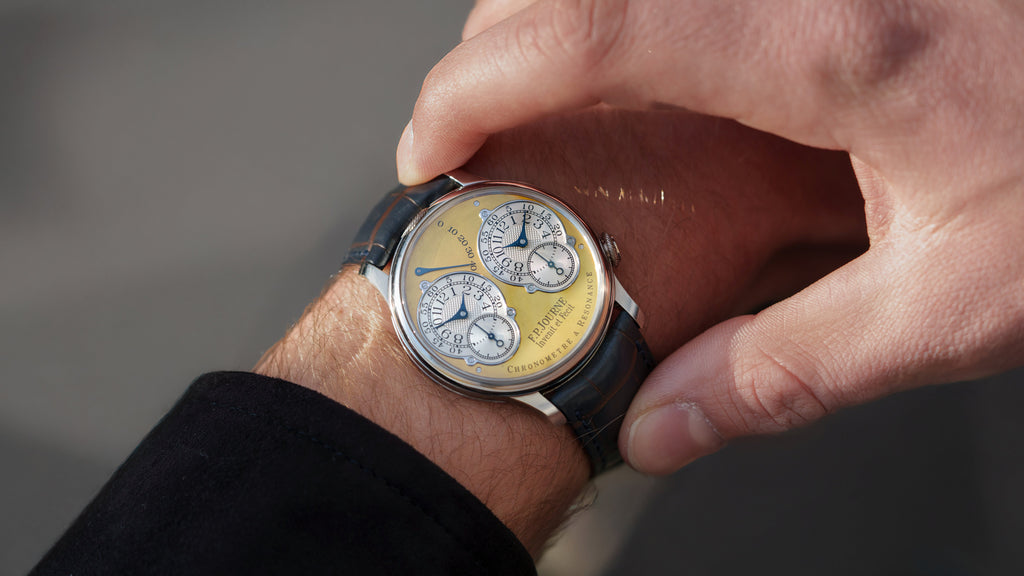
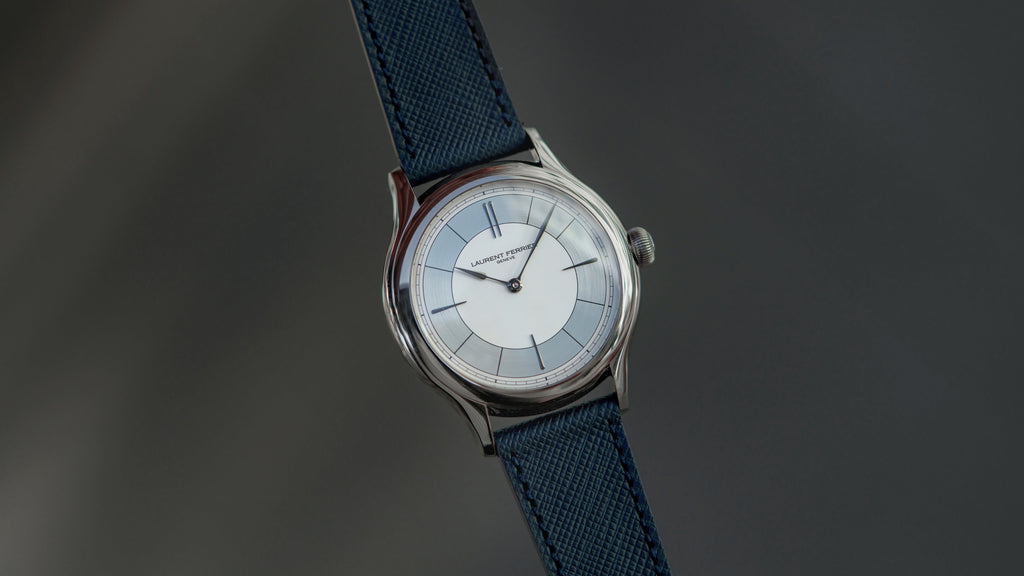

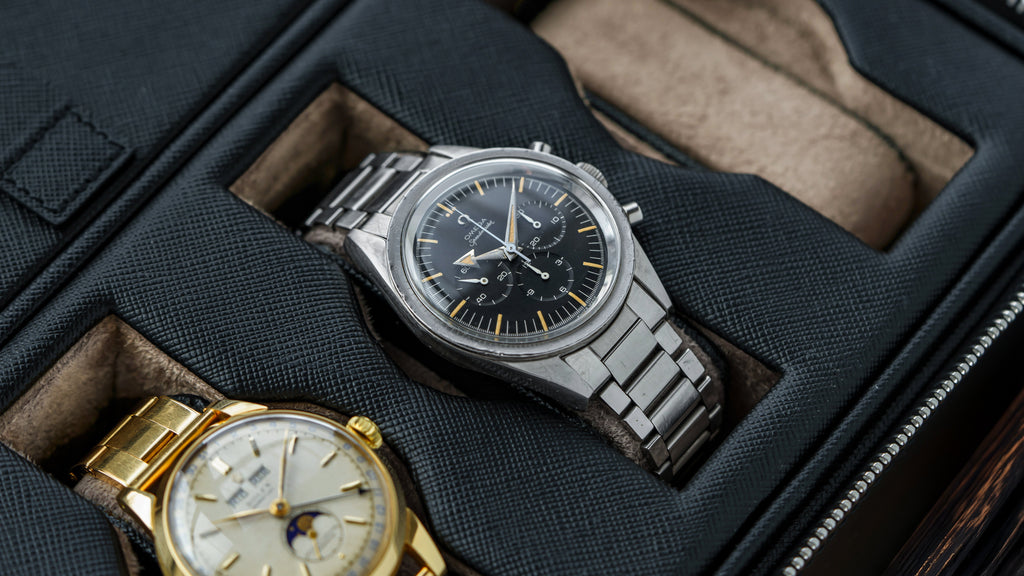
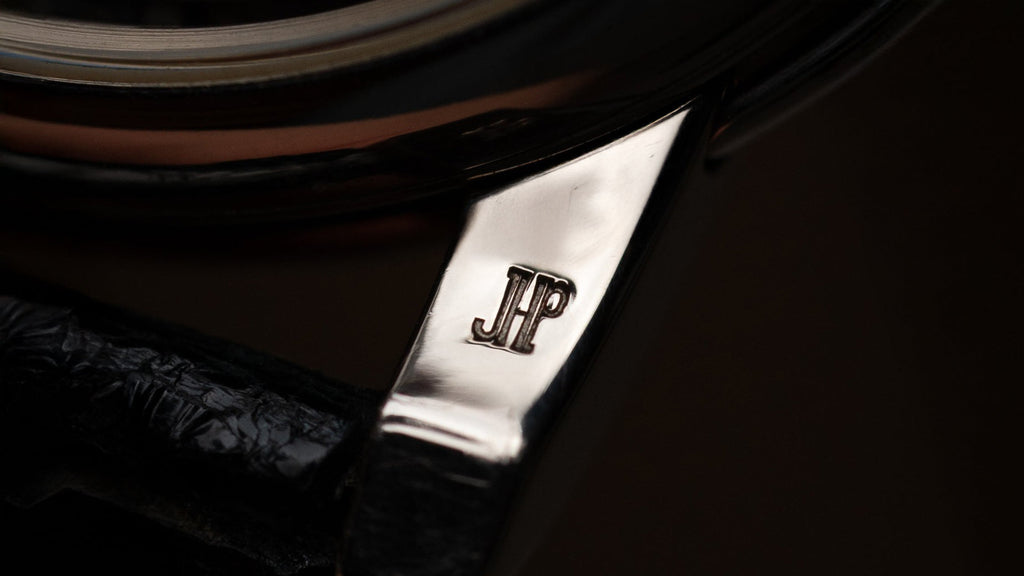
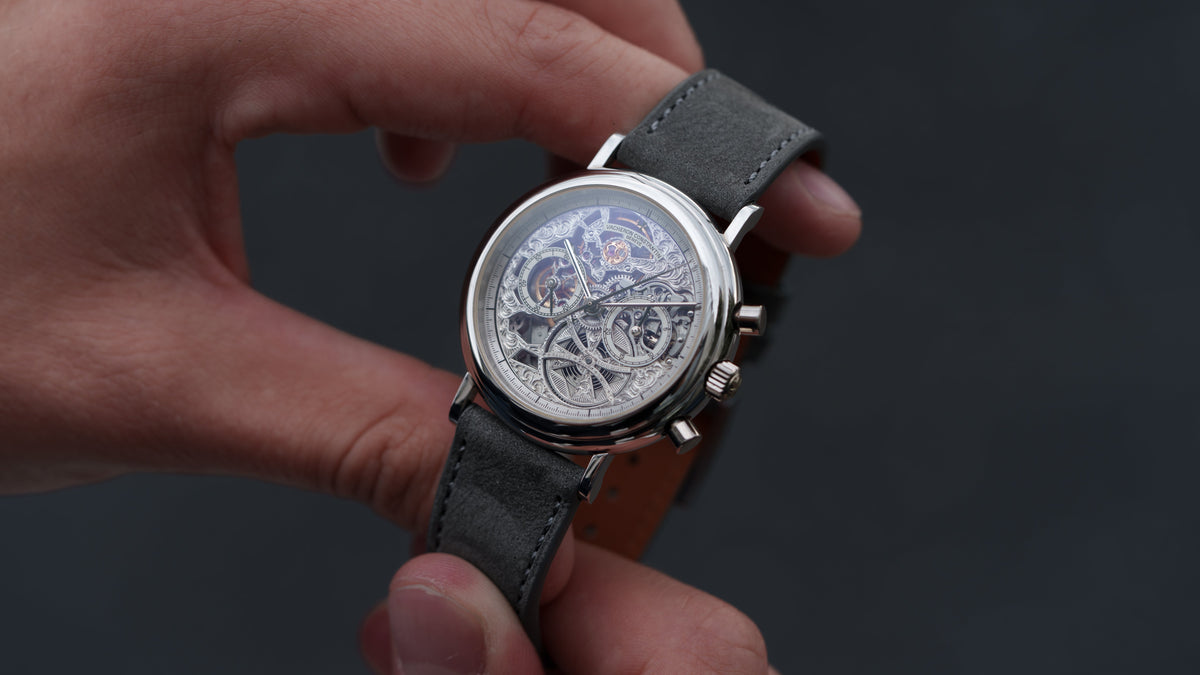
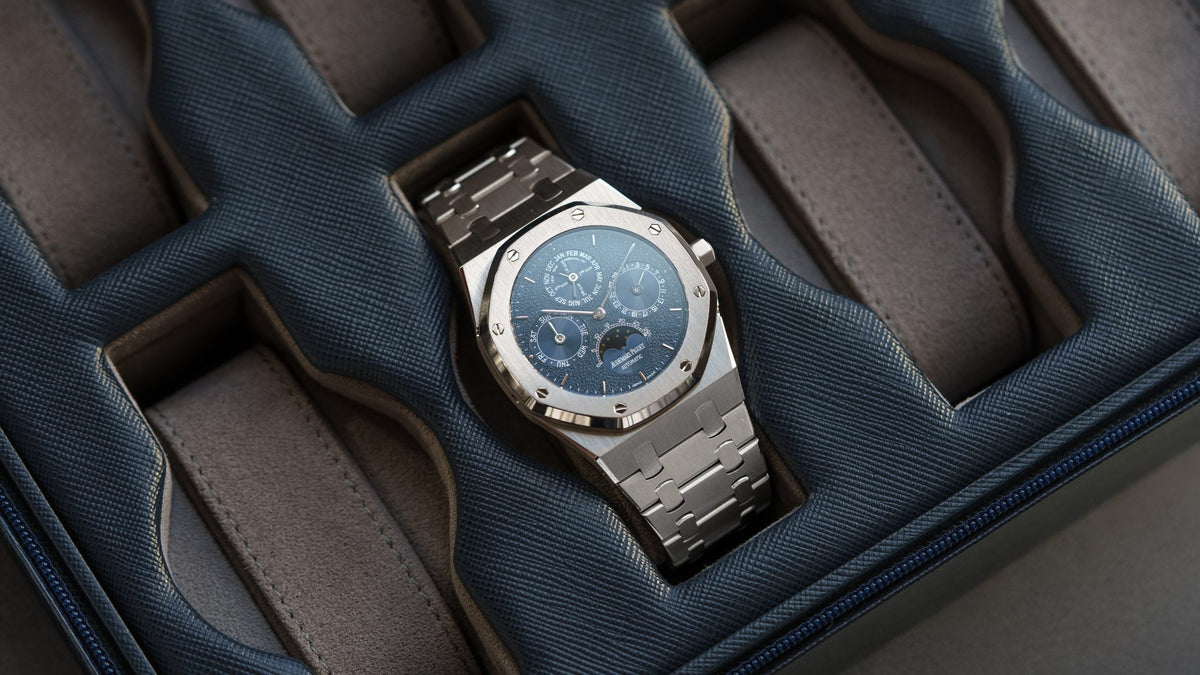
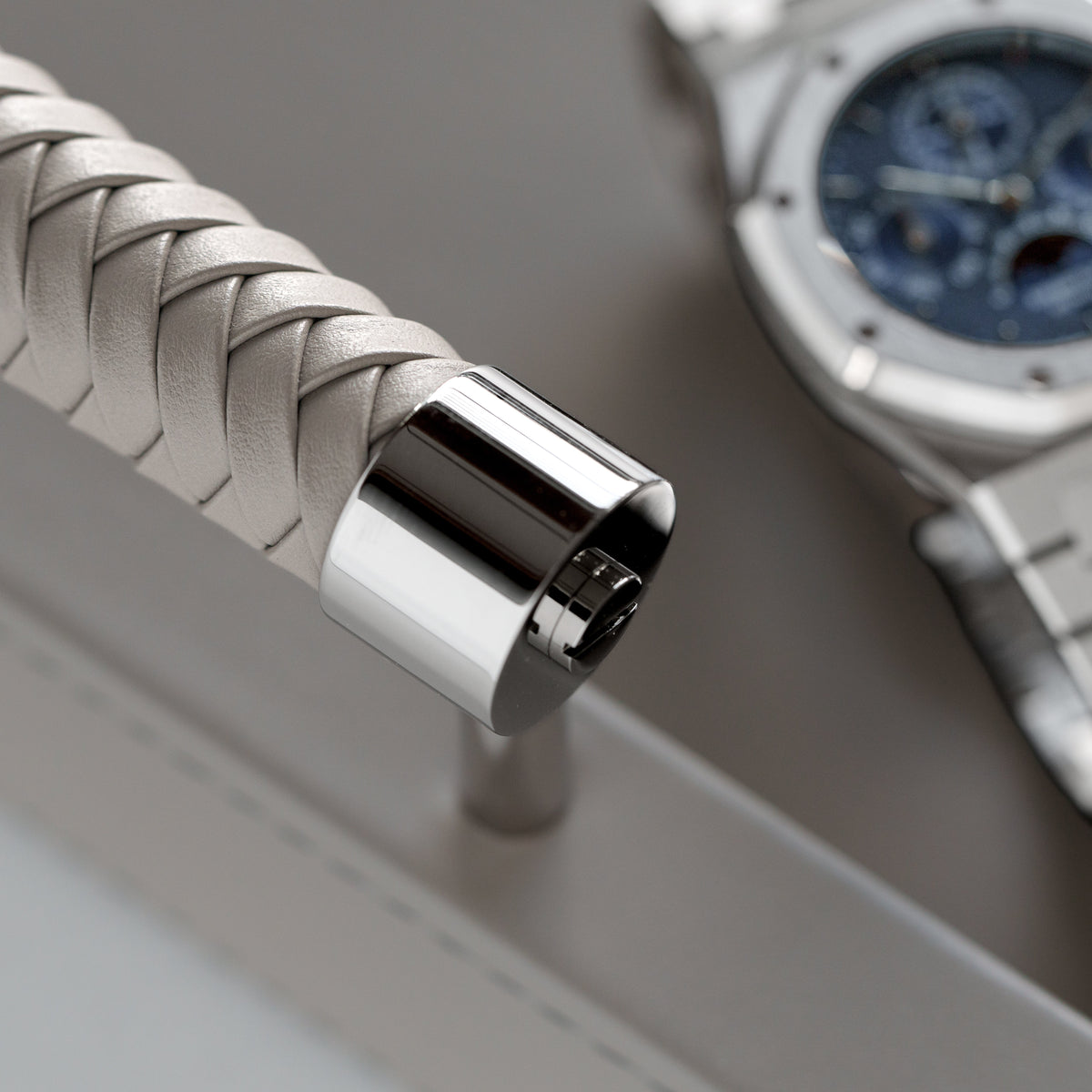
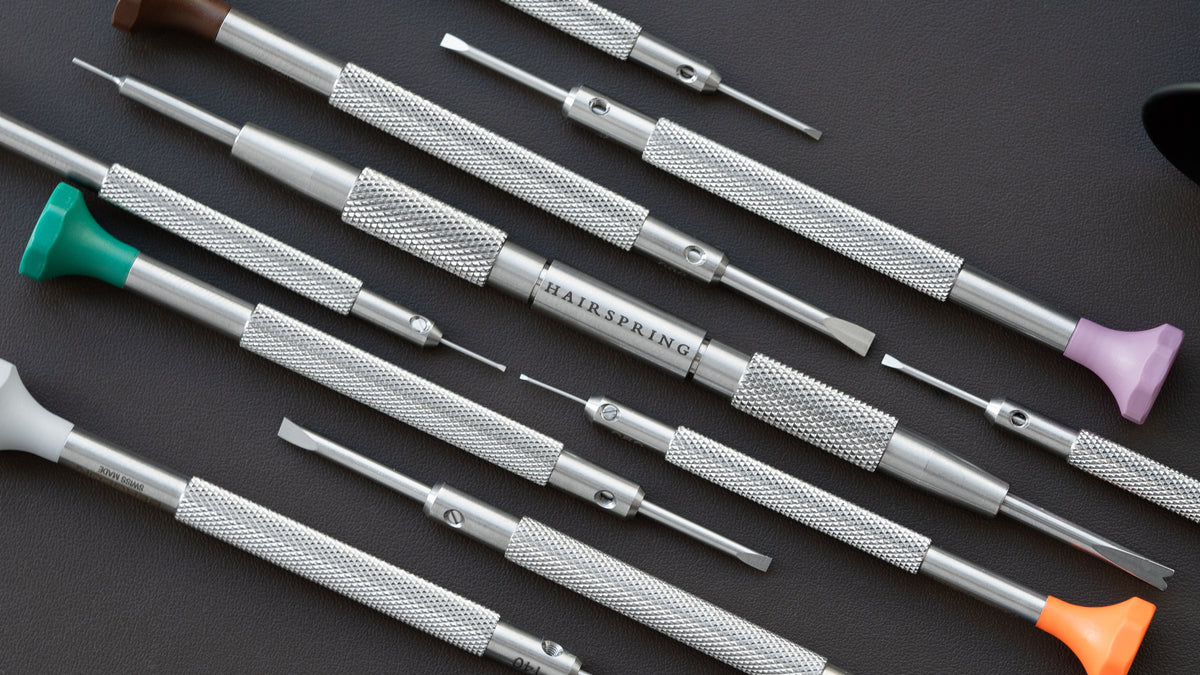
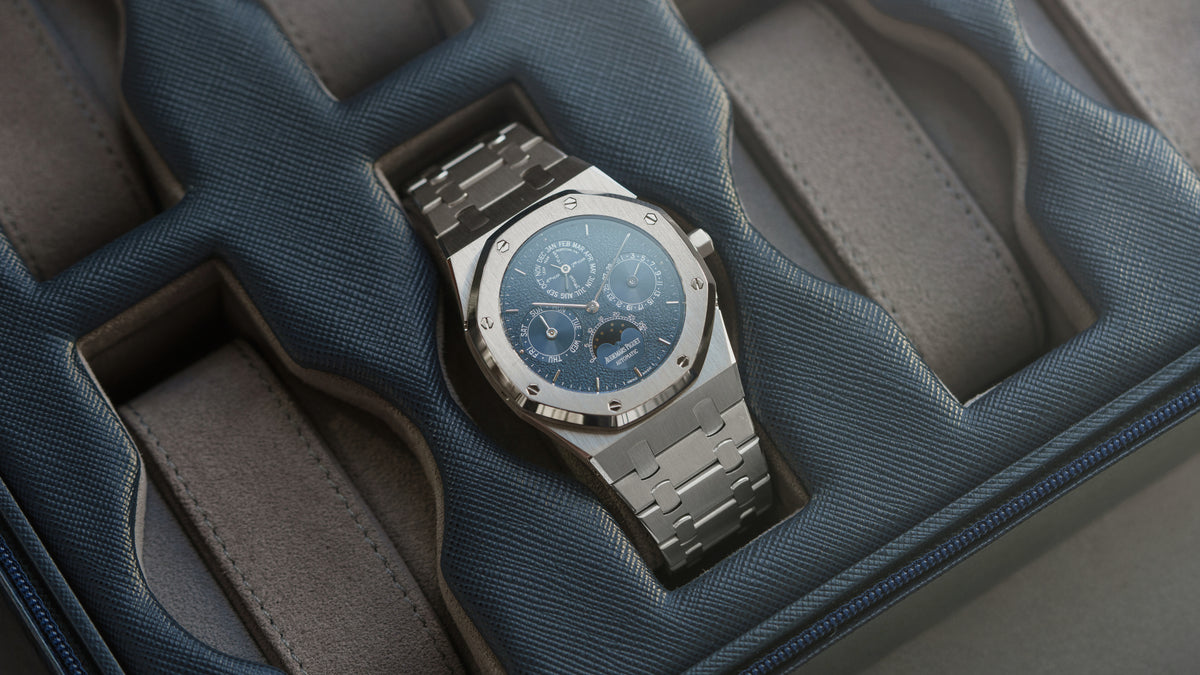
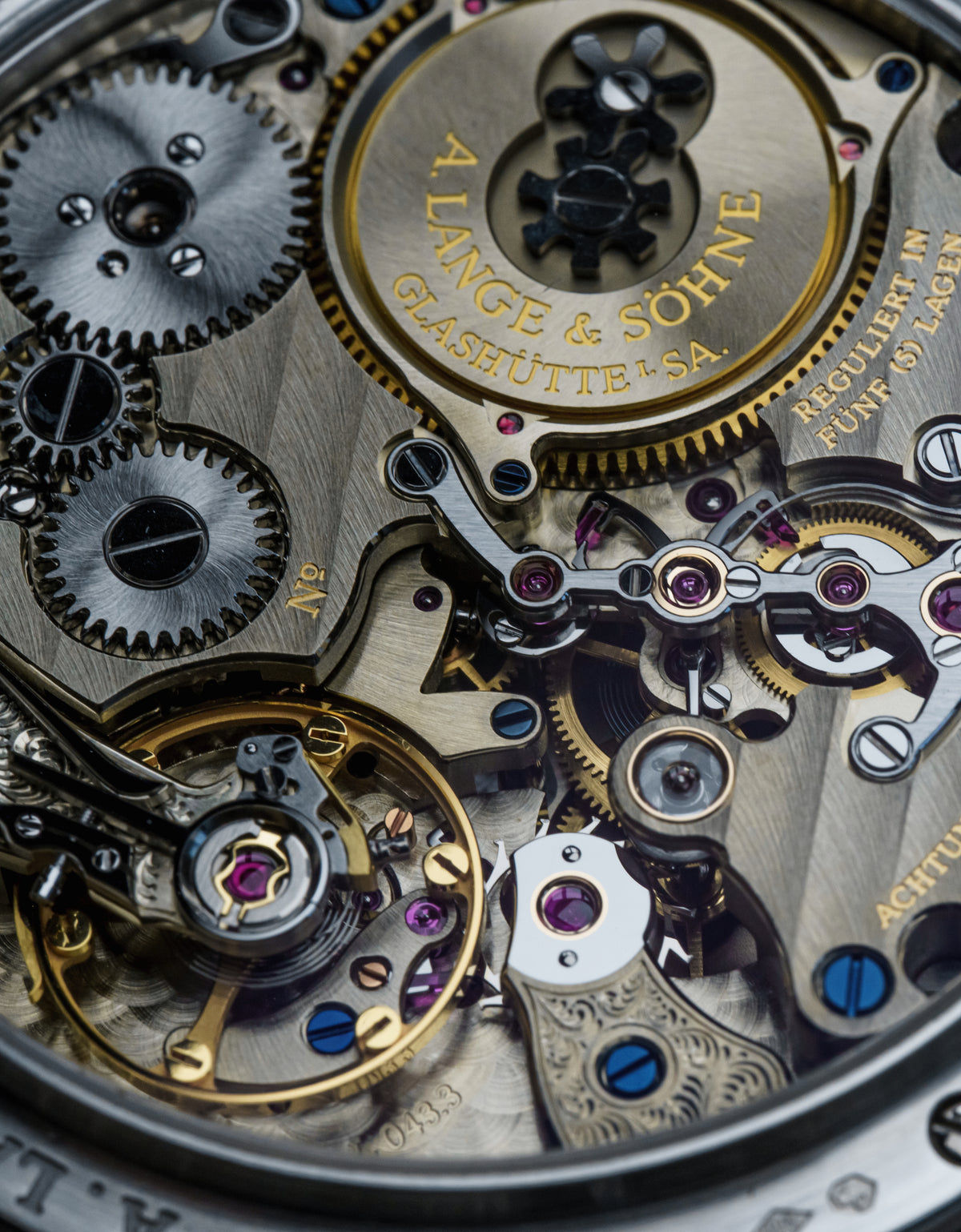
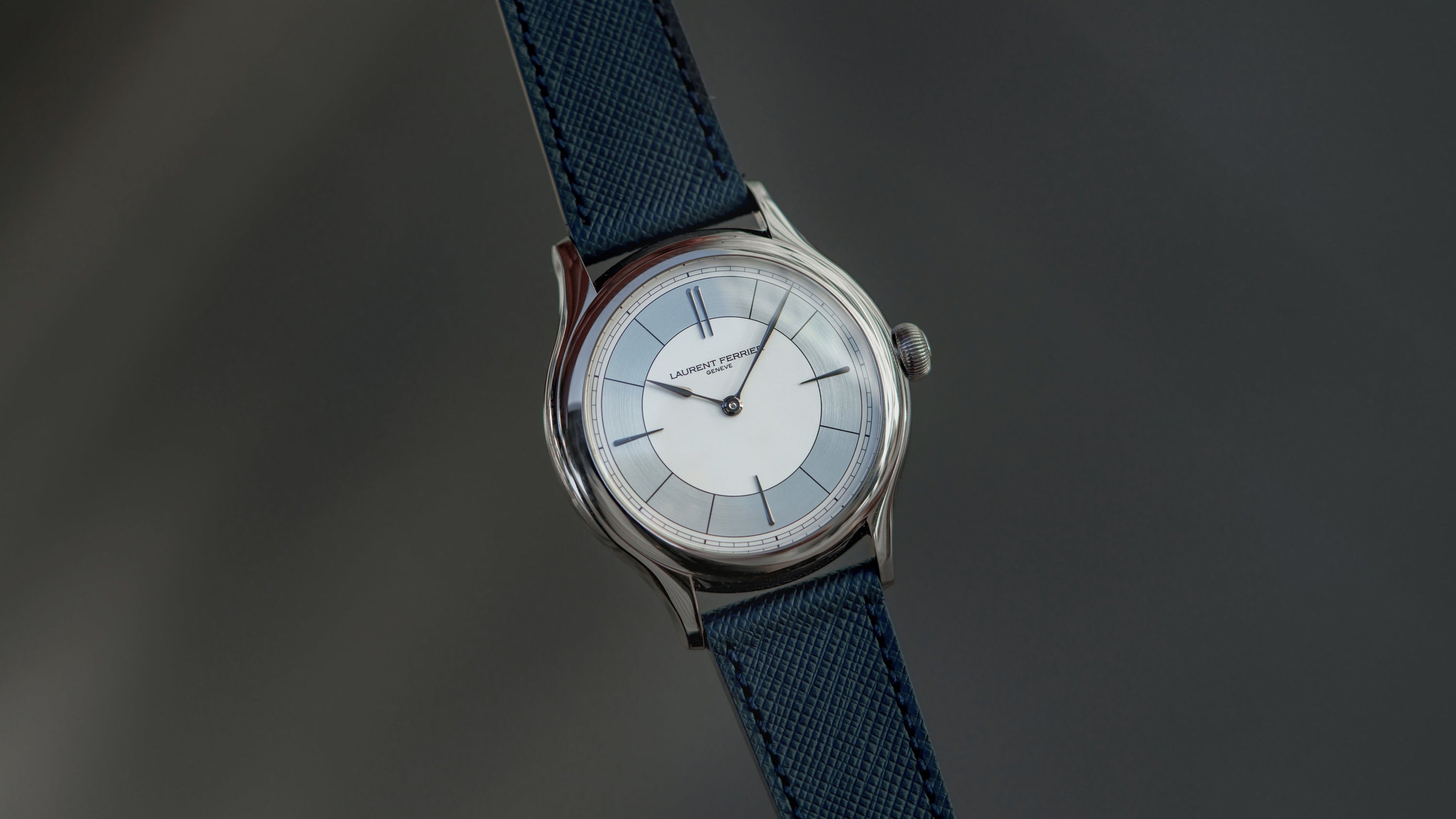
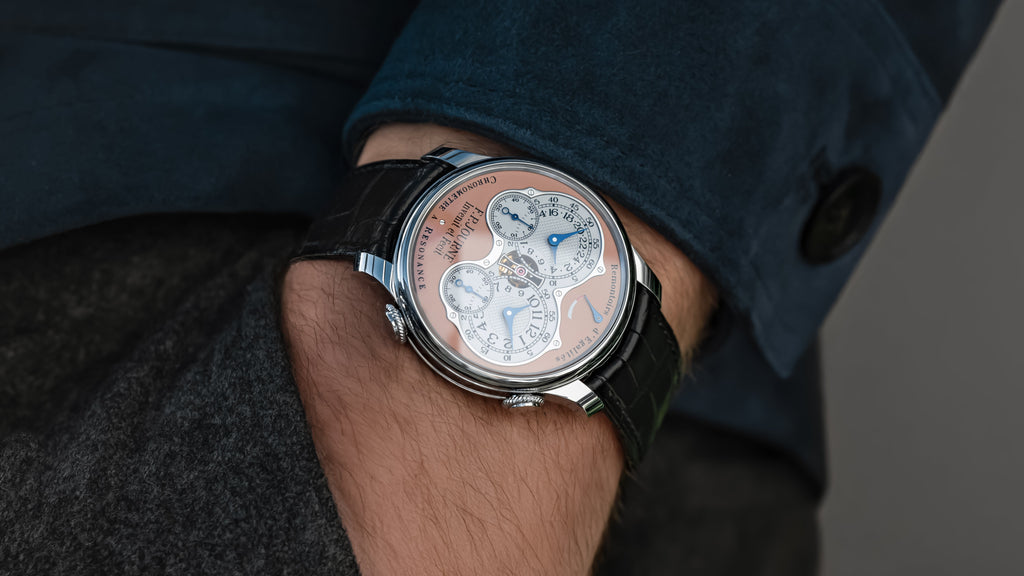
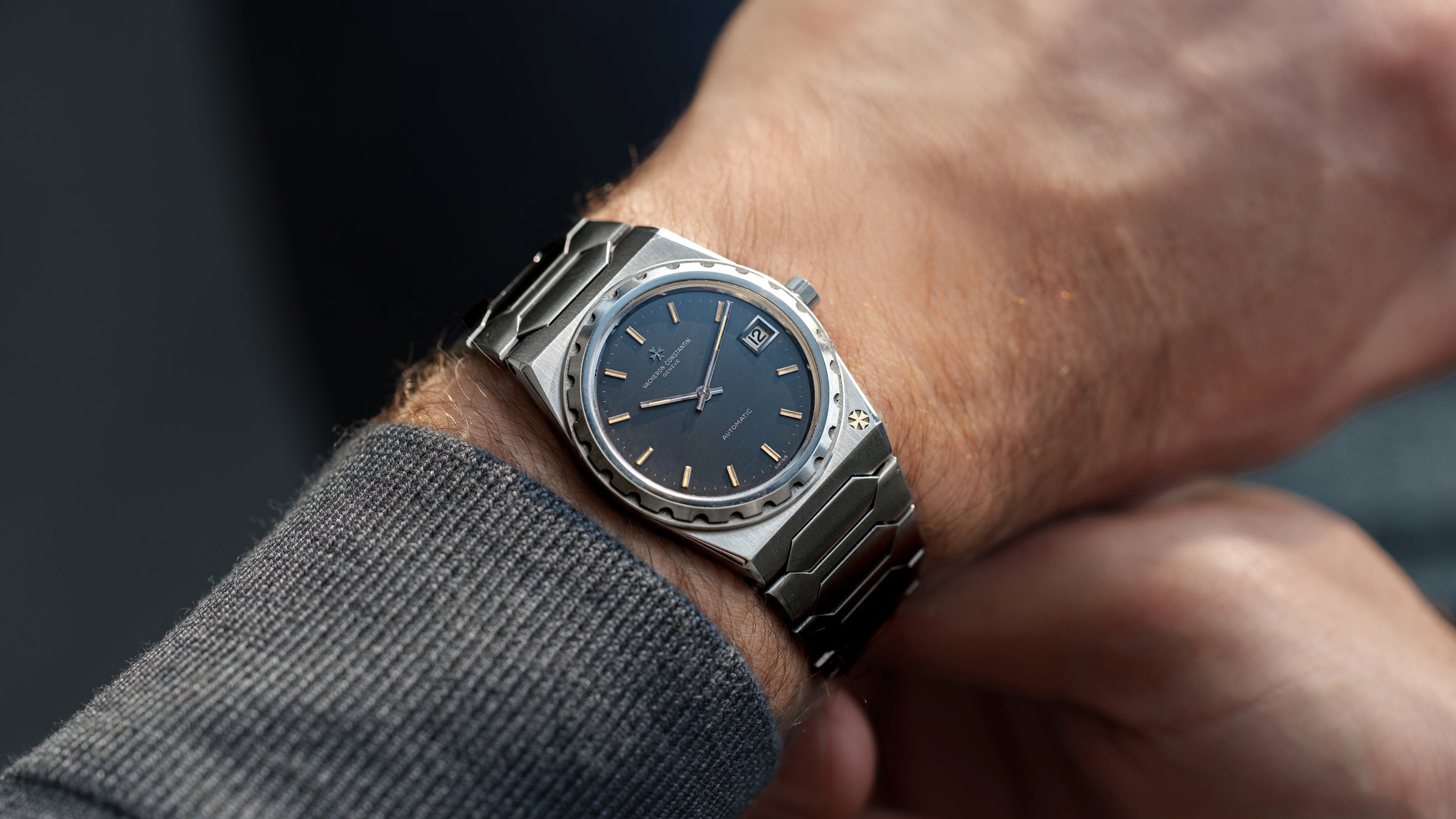
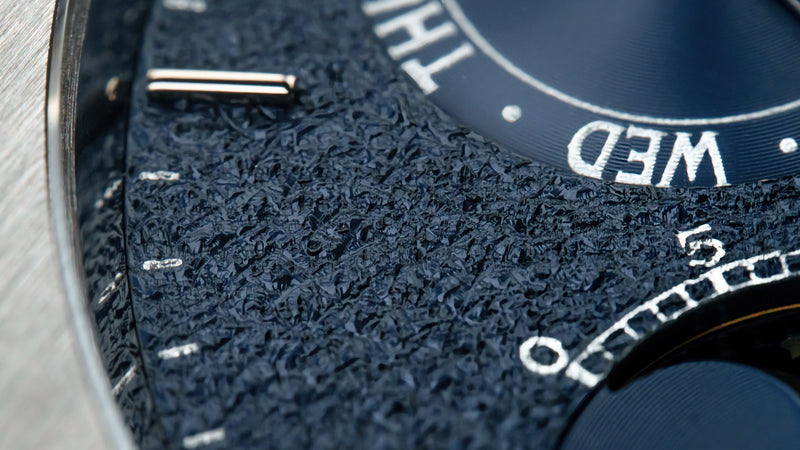

0 comments
Write a Comment